When it comes to wisdom, the arts and the pursuit of deeper answers to life’s big questions, few other colleges or universities in the world can compete with the bedrock of knowledge baked into the core of Cambridge.
Renowned worldwide as a city rich in educational capabilities, having produced some of the finest minds in history, it’s little wonder that the Cambridge colleges are beloved all over the world.
The most renowned Cambridge colleges have long histories and lists of famous alumni that are almost as long in and of themselves – from modern comedians and British heartthrob actors, through to pivotal scientific minds like Charles Darwin, Sir Isaac Newton and Professor Stephen Hawking.
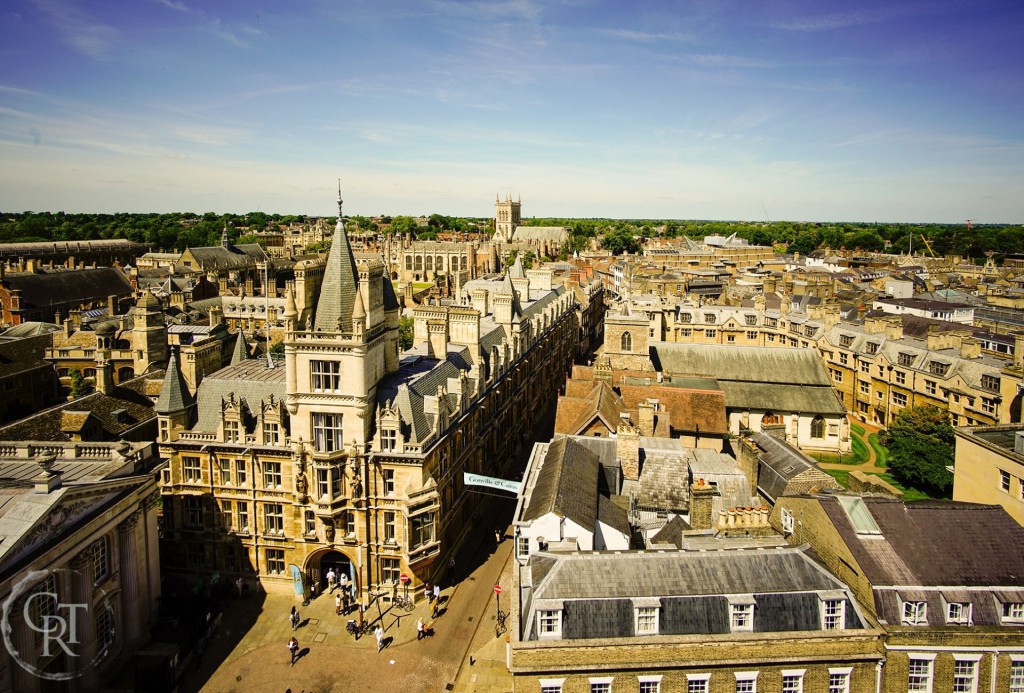
Yet even the most prestigious Cambridge college is welcoming to students, tourists and visitors from every walk of life. Knowing that their hallowed halls of learning are just as sought out as their stunning architecture and tales of times gone by, the Cambridge colleges are always excited to share their stories and secrets with you.
Cambridge Colleges
While there is more to the city of Cambridge than its colleges, there is no denying that the university and its constituent institutions have had a huge hand in shaping the character and culture of Cambridge city centre today.
While we absolutely encourage you to explore the full depth and breadth of experiences that Cambridge has to offer, it would be truly remiss of us not to celebrate not only the most popular Cambridge colleges – but also the lesser known and more secretive corners of higher learning nestled in the quietest corners of town, too.
Ready for some insights into some of the best Cambridge colleges? Look no further. This guide to visiting Cambridge colleges will boost your expertise ahead of your next trip out with us.
A full list of all 31 colleges in alphabetical order is:
- Christ’s college
- Churchill college
- Clare college
- Clare Hall
- Corpus Christi college
- Darwin college
- Downing college
- Emmanuel college
- Fitzwilliam college
- Girton college
- Gonville & Caius college
- Homerton college
- Hughes Hall
- Jesus college
- King’s College
- Lucy Cavendish college
- Magdalene college
- Murray Edwards college
- Newnham college
- Pembroke college
- Peterhouse college
- Queens’ college
- Robinson college
- Selwyn college
- Sidney Sussex college
- St Catharine’s college
- St Edmund’s college
- St John’s college
- Trinity college
- Trinity Hall
- Wolfson college
Some of these colleges are for postgraduate students only, others welcome a mix of undergraduate and postgraduate students.
And where better to begin our exploration than with perhaps the most famous of them all – King’s College?
King’s College
This is it – the big one, arguably the most famous one, the truly majestic sight recognisable as a key Cambridge landmark.
Although King’s College is not the oldest Cambridge college, nor is it the largest constituent college of the University, it is perhaps the most beautiful Cambridge college. Something to ponder as you stroll its spacious grounds and hallowed halls, soaking in the history and knowledge surrounding you all the while.
There are actually 31 colleges comprising the wider University of Cambridge, and so the sheer scale and variety of the campuses that make up its sprawl can perhaps feel overwhelming from time to time.
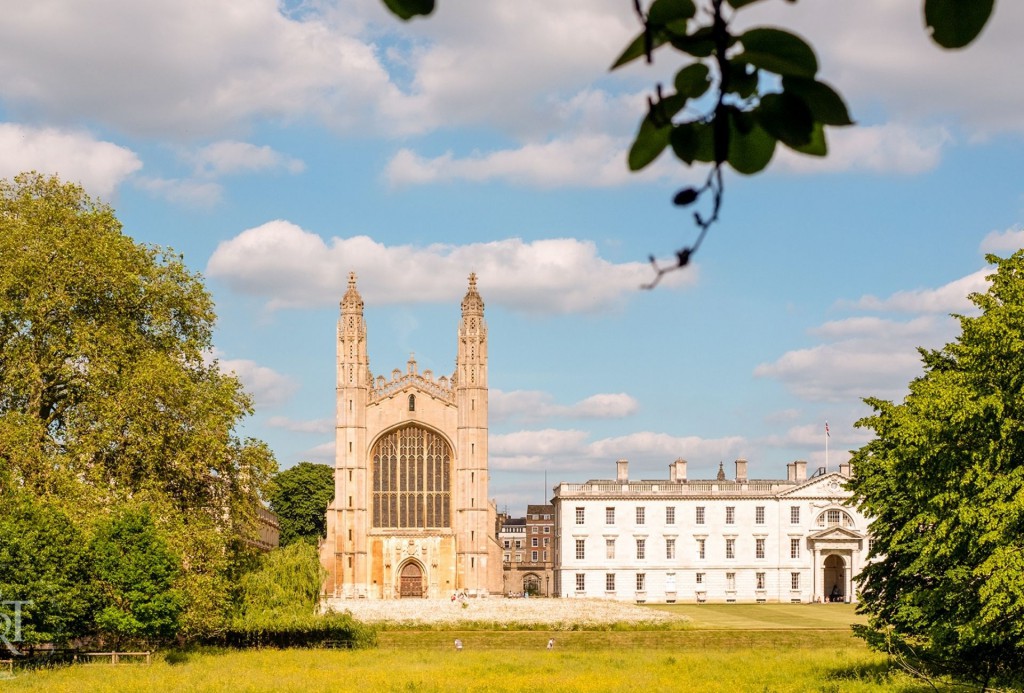
How about this for a view? King’s College chapel overlooking the Cambridge Backs
The good news is that this is definitely the best Cambridge college for experiencing the history of Cambridge, and that extensive and in depth tours are always available to appease the curious and inspire the brave.
It’s impossible to say anything about King’s College without first remarking on its gorgeous architecture. Not only is it dazzling in its own right – photogenic from every angle, and easily some of the finest work of its kind – but it also had a hand in shaping the Collegiate Gothic architectural movement.
It is of course the location of a very famous Cambridge landmark, King’s College chapel. You can visit the college and get entrance to the chapel on one of our Cambridge walking tours.
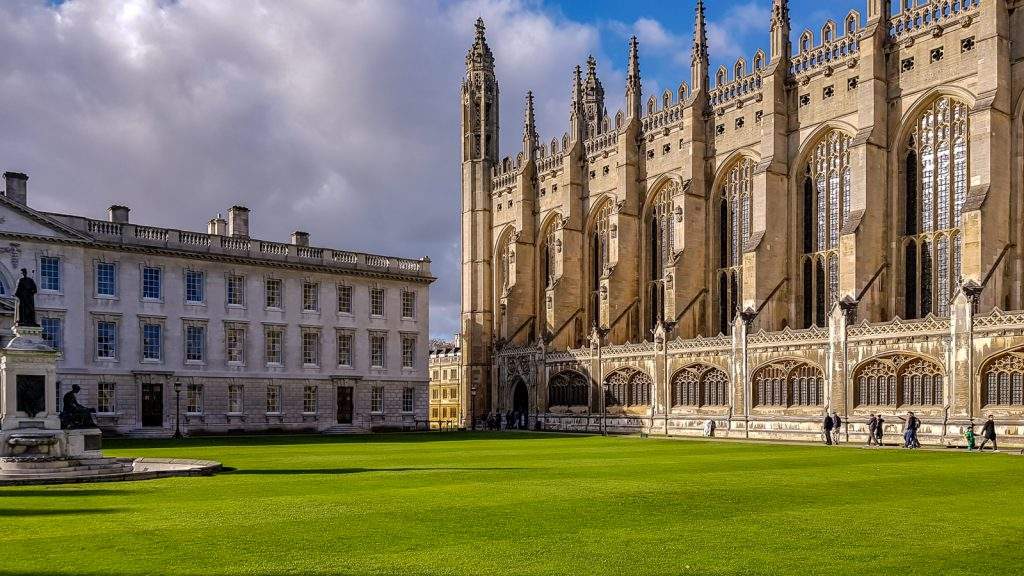
Sharing this distinction with, of course the colleges of Oxford University, Cambridge college grounds and buildings enjoy an incredibly detailed level of architectural finesse that went on to inspire many of the university architectural styles of the United States – including Washington University and Princeton University.
Cambridge University was established in the early 1200s, and has been a pivotal institution in moving Great Britain’s philosophical, scientific, mathematical and artistic ingenuity forward over the centuries.
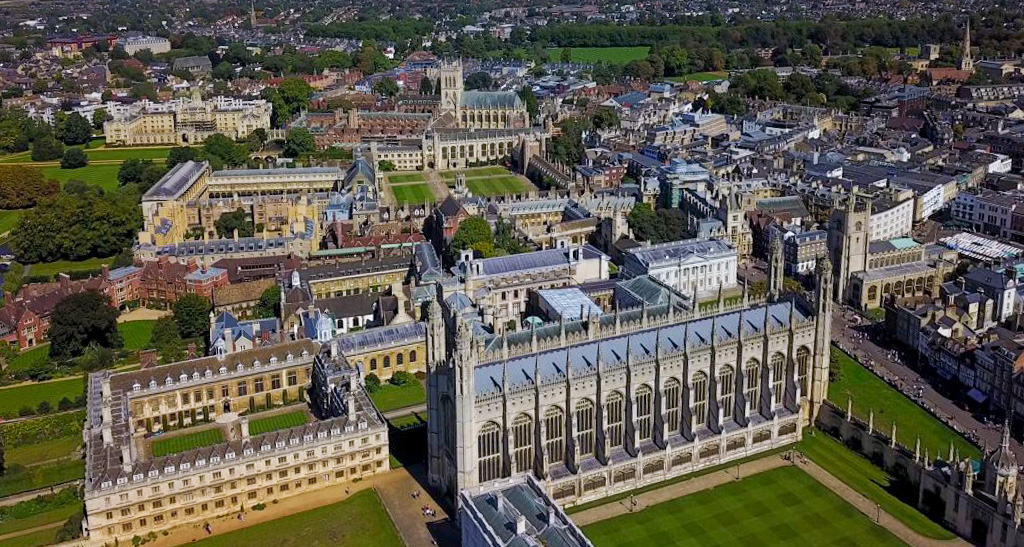
That’s because Cambridge University is as much a centre of research as it is of learning – students don’t just learn about what we all already know here, but try and actively push things further too.
It’s exciting to think that touring and exploring Cambridge University college grounds could put you within a few feet of the latest breakthrough. Someone could be painting the 21st Century’s Mona Lisa not twenty feet from where you were just walking – or bringing something from science fiction into science fact just around the corner.
Peterhouse College
If you are seeking the best Cambridge college for history, you need look no further – the story of Cambridge University’s Peterhouse college stretches back over 800 years.
If you are looking to go as close to where it all began as possible when exploring the Cambridge Colleges, look no further than Peterhouse, which was founded in the 1280s. Today, it still stands tall and proud, with rich tan coloured stonework and impressive arched windows – and it remains an active part of daily student life, despite being the oldest Cambridge college.
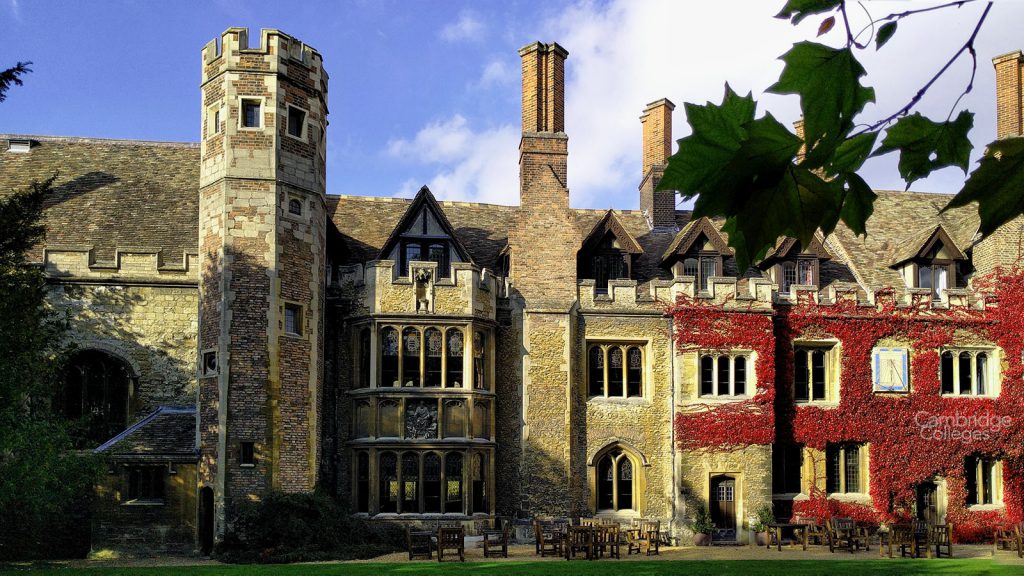
Do you imagine that, when Peterhouse, the oldest college, was built, the mediaeval architects and craftsmen had any idea what Cambridge University would later become – let alone their influence on global civilisation?
If you’re good with numbers, you ought to feel right at home when exploring the Cambridge colleges. Throughout much of the University’s history, tremendous emphasis was placed on the knowledge of mathematics, and particularly what is called applied mathematics.
Students would be required to show aptitude in this field, even if their actual core studies were focused elsewhere – that’s because applied mathematics has incredible uses in solving problems in science and technology.
Don’t worry though – these days, it’s easy to enjoy the grounds of impressive architecture of the Cambridge colleges, even if you have next to no skill with numbers. Nothing to be ashamed of – it’s all about soaking in the sights.
Today, any Cambridge colleges guide will tell you how diverse Cambridge University has become – both in terms of the nature of popular colleges and the students being welcomed into its grounds, but also the kinds of subjects that are actively studied here.
In the 1850s, the Cambridge University Act was introduced to allow every Cambridge University college the opportunity to diversify what was taught and studied throughout the institution – including more far reaching subjects like modern linguistics and theology.
However, the beating heart of any Cambridge college will always be numbers, mathematics and the advancement of knowledge. Even a fleeting visit to this incredible place is almost certain to leave you a touch smarter than when you entered.
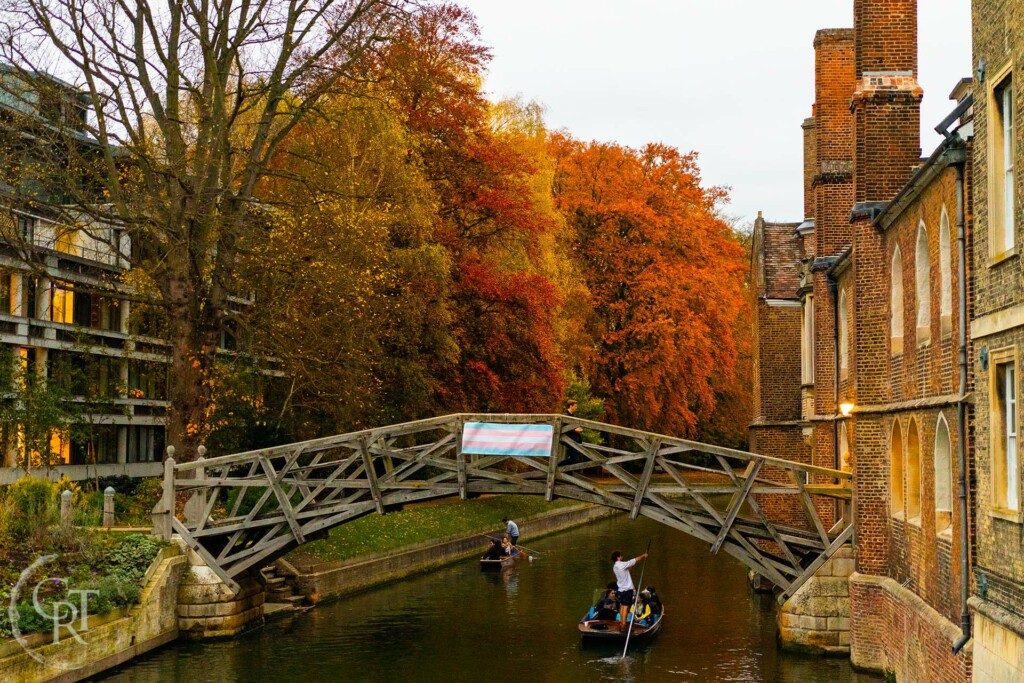
The love of numbers and applied mathematics even ties into local landmarks. Where else but Cambridge could you expect to cross the River Cam – beloved as a punters’ paradise – using the geometric marvels of the Mathematical Bridge?
The River Cam is a central part of life in both the most beautiful Cambridge colleges, and in the wider community. Exploring it is an absolute must, whether by punting tour or by walking its banks.
Trinity College
Perhaps the most prestigious of Cambridge colleges, and certainly among the most famous and awe inspiring, Trinity is a Cambridge college that has moved through the centuries with elegance and grace – standing today as a beacon of knowledge and tourism in its own right.
While by no means the oldest of the Cambridge colleges, Trinity certainly has enough history to make it among the foundational institutions of Cambridge University proper.
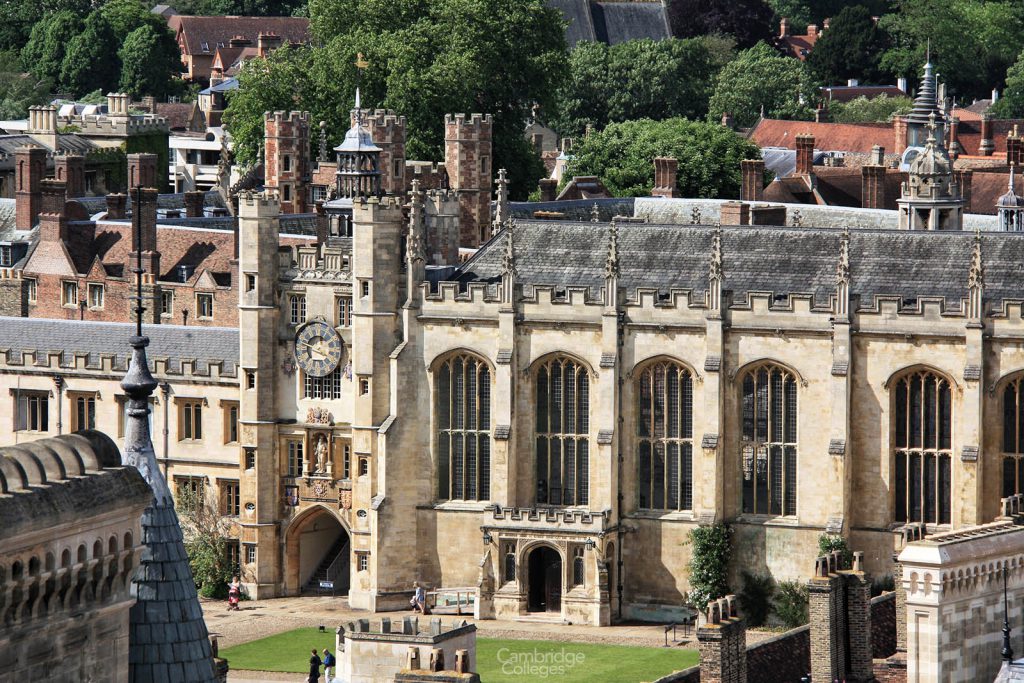
Image courtesy of www.cambridge-colleges.co.uk
One of the most famous areas of Trinity is the Great Court – astounding enough in greenery and architecture to truly make this place a contender for the most beautiful Cambridge college.
Gothic architecture is abundant in the Great Court, with well tended and lush green grounds framed by neat paths that let the towering buildings around you do all the talking. Taking a camera when you visit Trinity is an absolute must, as the spires and walls paint stark silhouettes against the open sky.
Trinity College is one of the best Cambridge colleges, certainly in terms of the fame of its alumni – from scientific genius Sir Isaac Newton to poet Lord Byron, as well as countless British Prime Ministers, and even His Majesty King Charles III.
Walking in the footsteps of so many famous faces certainly does lend something of a start quality to Trinity – yet that’s far from its only claim to fame. Established in the 1500s, this is one of the most popular Cambridge colleges for a whole range of reasons.
Sharing its love of applied mathematics with countless other college campuses, Trinity College is also well known for its rowing club. Many of the most active and capable participants in the sport cut their teeth here, going on to enjoy successful rowing careers – or simply a beloved hobby.
The College is the proud home of the Trinity Bridge, which reaches across the River Cam and is a fantastic example of a triple arched old stone bridge. It was put in place during the 1700s, and was built to replace the bridge that stood there previously since the 1600s with more advanced and durable construction techniques.
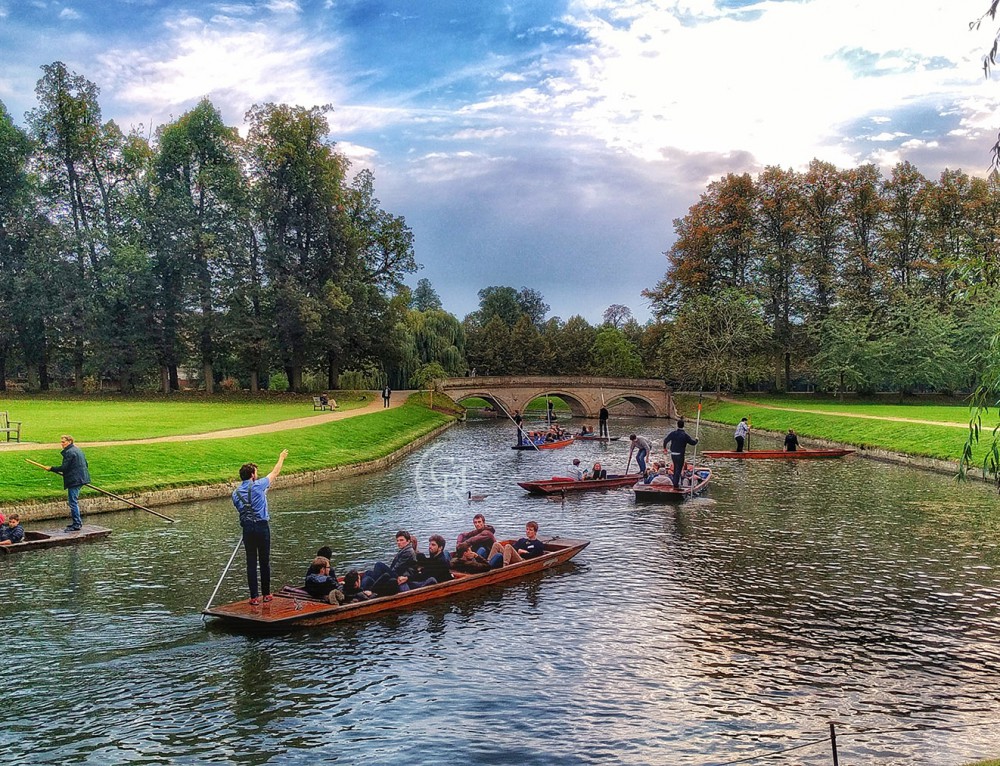
Once again, being so close to the River Cam gives this university college plenty of advantages. However, there is more than enough to see in Trinity on good old terra firma too.
One of its most incredible sights is the appropriately named Great Gate, which cements many opinions in many minds that this is the most beautiful Cambridge college for its architecture alone.
Tall, grand and imposing, a stand out feature of the Great Gate is its statue of the founder of the College – none other than King Henry VIII, who combined two existing Cambridge colleges to create what would become Trinity College today.
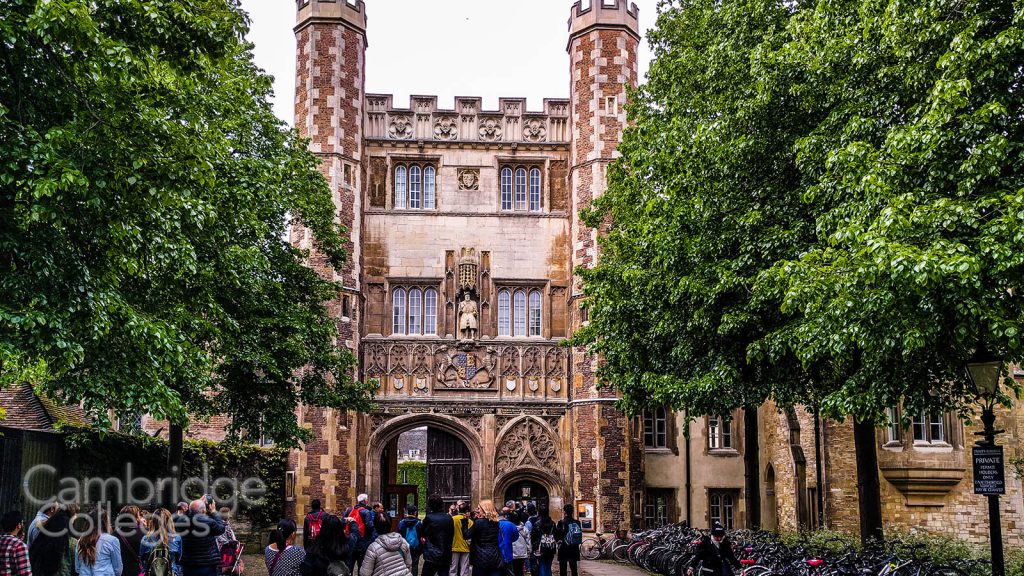
Image courtesy of www.cambridge-colleges.co.uk
If you are looking to combine the beauty of the river with some of the most rare and advanced books of knowledge in existence, then Neville’s Court is where to go. The verdant green lawn sprawls uninterrupted from the grand columns to the banks of the river, and close at hand is the Wren Library too. Designed by none other than Sir Christopher Wren, architect of St Paul’s cathedral in London.
As one of the oldest Cambridge college libraries, it’s not surprising to learn that Wren Library has become the home of not only some of the most crucial works in English literature, but also correspondences from history that have shaped the course of science and innovation.
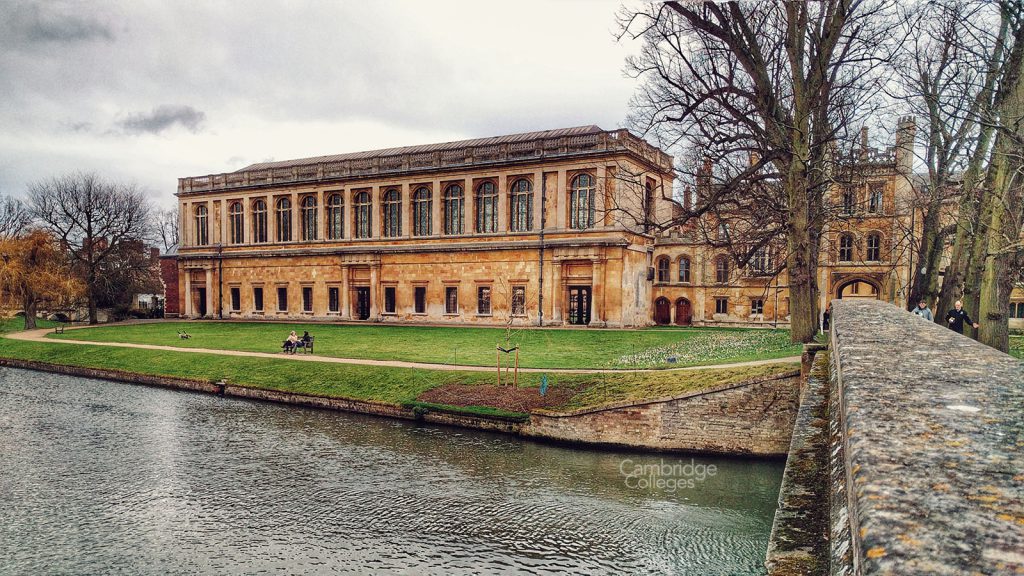
For example, Trinity College and the Wren Library is the only place where you can find some original First Folios from William Shakespeare, as well as letters handwritten by Sir Isaac Newton himself.
History lovers and fans of magnificent architecture should certainly take the chance to visit the Trinity College Chapel too. The rich colours and sense of serenity within its hallowed halls are certainly a sight to behold, yet the chapel also honours the memory of notable alumni and fellows of the college too.
Churchill College
When it comes to more modern University college campuses that themselves have proven instrumental in pushing equality and diversity forward, Churchill College is a fantastic example.
As you may have already guessed, the namesake of this Cambridge University college was none other than Sir Winston Churchill himself, who spearheaded the creation of Churchill during the 1950s. However, while this is not one of the all female colleges Cambridge offers, it was the first of the Cambridge colleges to abolish its male-only rules and admit female students in a co-ed setting.
Befitting its forward thinking nature, Churchill College focuses intensively on science and invention, yet is also keenly interested in moving forward the possibilities of art and creativity. This wide range of subject matter gives Churchill something of a cosmopolitan air, and the motto of this college is summed up in a single word and state of intentions – “Forward”.
Progressiveness is the aim of the game across Churchill, yet it would be a mistake to assume that there is any lack of history, mystery, secrets and inspiration laced throughout this Cambridge University college as a result.
In fact, the College is just as beautiful and as inspiring to explore as any of its more storied and ancient college campus cousins, and it was this Cambridge University college that housed the whole institution’s student radio station until it closed in 2011.
Winston Churchill may have made history as a wartime leader, but it’s no secret that he was also very fond of the finer pleasures of life. It’s perhaps no surprise therefore to find out that this college campus is the site of the largest dining hall facility in all of Cambridge. Something to mull over if your Cambridge punting tour works up an appetite.
For art lovers, there is no doubt that this is the most beautiful college in Cambridge. In the 1960s, Dame Barbara Hepworth contributed the large Four Square Walk Through to the grounds of Churchill, which remains in use both as inspiration and somewhere to sit among the student body to this day.
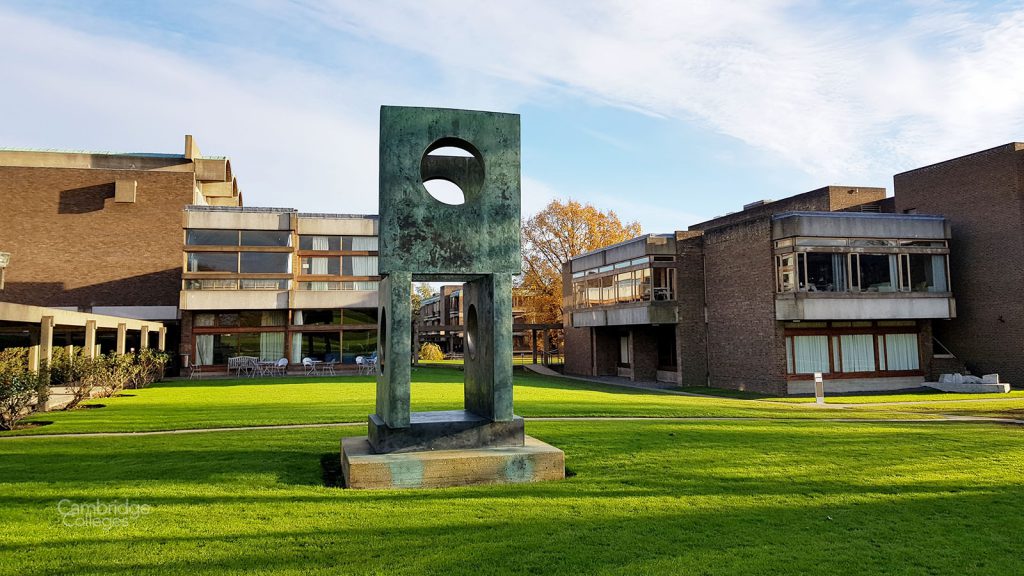
Likewise, famous artists such as Andy Warhol have been immortalised within this college’s walls, with his prints of Marylin Monroe safely kept within. Music also plays a big role in the life of this Cambridge college – every May, the College welcomes musicians and artists to a massive garden party. Many of those performers go on to find fame around the world following a début here, such as The Noisettes.
Another modern edge to Churchill College’s appeal is that there are extensive sports facilities on site. There’s often a buzz of activity and competitive spirit at the college, and facilities include a comprehensive gymnasium, tennis and squash courts, as well as a football pitch. Naturally, rowing is a big and beloved sport at Churchill too – as you would expect of the best Cambridge colleges.
Of course, every Cambridge University college has its debates and differences of opinion, and Churchill is no different. As one of the most modern, recently created and forward thinking scientific campuses, there was a strong division of opinion when it came to putting a chapel within the grounds of the new college.
Nevertheless, that more spiritual side won the debate and the chapel still stands today – and in terms of aesthetic appeal, it’s wonderful that it was created. Interestingly, the compromise reached was that the cheap would not fall under the administration of Churchill College itself, but instead be managed and run as its own independent entity in the westernmost grounds of the college.
The contrast that Churchill College presents, modern and upbeat, creates a wonderful feeling compared to the also inspiring and more solemn air one feels when exploring the oldest Cambridge colleges. These days, a good Cambridge colleges guide will happily extol the virtues of both the traditional and the modern – and when you visit a Cambridge University college or two for yourself, we’re confident you’ll come to the same conclusion.
Cambridge University colleges have to be seen to be believed
There is simply nowhere in the world quite like Cambridge University – and its guiding hand in shepherding civilisation forward has been as powerful in its history as it remains in its influences today.
Soaking in the brilliance of this place simply has to be done if you are ever intrigued by the opportunity to explore the most beautiful Cambridge college grounds open to the public.
No need to apply for a scholarship to reach these hallowed halls, either – simply visit Cambridge and from the safety and comfort of the River Cam, you’re close enough to feel the wisdom awaiting you here.
